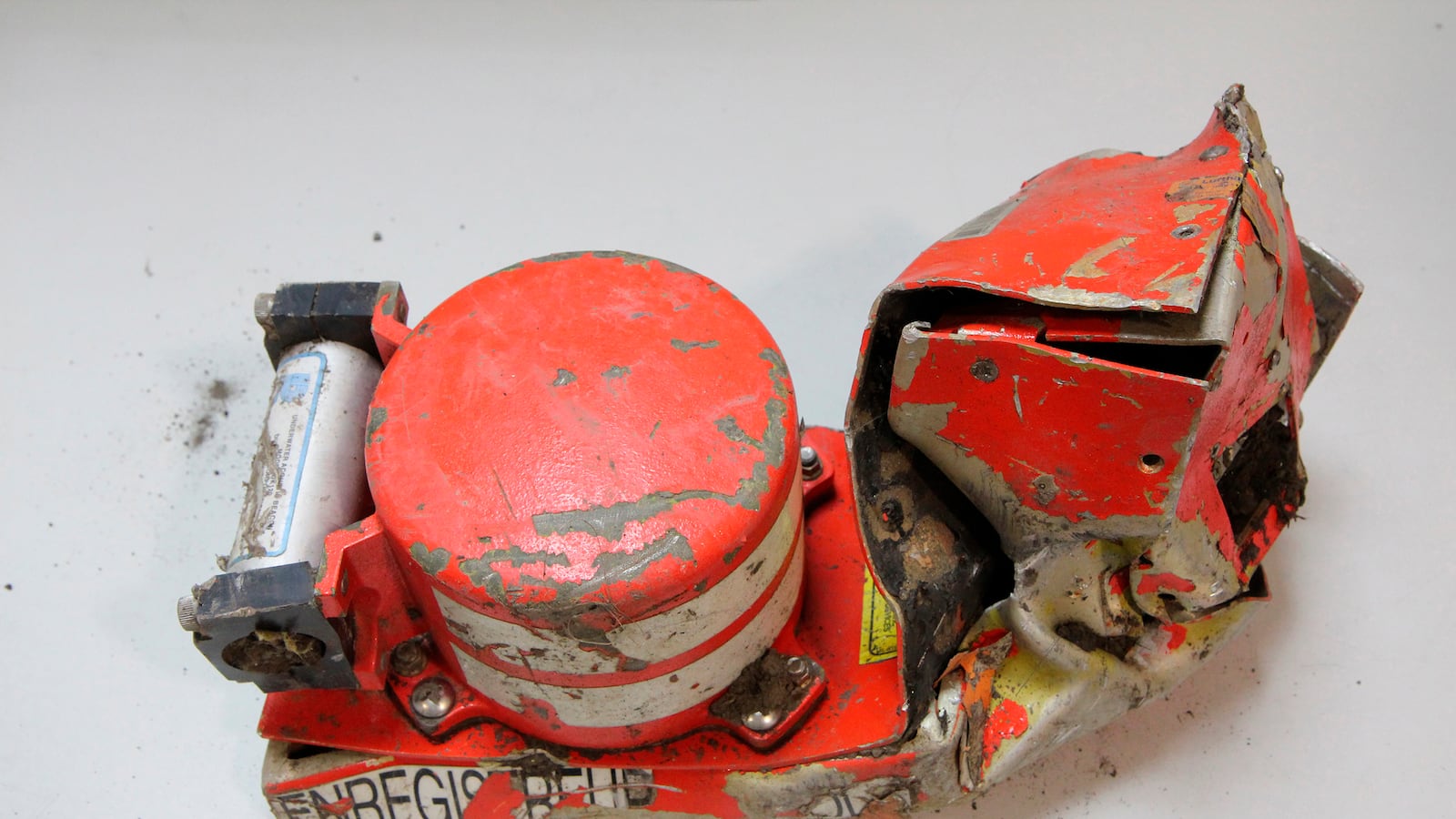
The second black box from the Lufthansa Germanwings budget Airbus A320 crash was recovered yesterday. This is a photo of the first black box recovered from the crash site, released March 25, 2015 by the BEA, France’s Bureau d'Enquetes et d'Analyses (Air Accident Investigator).
Flight recorders, or “black boxes,” have been used in investigations of aviation catastrophes since the mid-20th century and have developed considerably over the years. While older recorders contained spools of magnetic tape, modern devices use crash-survivable digital chips.
Reuters
This is a Deployable Flight Incident Recorder Unit (DFIRU). There have been increasing calls for commercial planes to be fitted with ejectable recorders that separate from the tail during a crash, a technology that is already in use by military aircraft. The “deployable black boxes” combine voice and data recordings and emit a distress signal to a global search and rescue satellite system.
Chris Wattie / Reuters
An employee of Germany’s Bundesamt fuer Fluguntersuchung BFU (German Federal Bureau of Aircraft Accident Investigation) holds a historic and partly burned tape-based voice recorder.
Wolfgang Rattay / Reuters
An employee of Germany’s Federal Bureau of Aircraft Accident Investigation holds a Russian-made historic tape-based voice recorder.
Wolfgang Rattay / Reuters
A flight data recorder from an unknown public transport aircraft is seen in a private aviation museum.
David W Cerny / Reuters
A flight data recorder from an unknown public transport aircraft is seen in private aviation museum.
David W Cerny / Reuters
An employee of Germany’s Bundesamt fuer Fluguntersuchung BFU (German Federal Bureau of Aircraft Accident Investigation) holds a historic and partly burned tape-based voice recorder at their headquarters in Braunschweig.
Wolfgang Rattay / Reuters
A historic steel-foil-based data recorder is seen at Germany’s Bundesamt fuer Fluguntersuchung BFU (German Federal Bureau of Aircraft Accident Investigation). On this model, the information is recorded and scratched onto a temperature-resistant steel foil.
Wolfgang Rattay / Reuters
This photo shows a cockpit controller for an early 1990s Loral Cockpit Voice Recorder.
Reuters
An employee of Germany’s Bundesamt fuer Fluguntersuchung BFU (German Federal Bureau of Aircraft Accident Investigation) holds a cockpit voice recorder, an up-to-date model by L-3 Aviation Products that is used in Boeing and Airbus aircraft.
Wolfgang Rattay / Reuters
An early 1990s Loral type F1000 Flight Data Recorder is seen in an undated photo provided by the Smithsonian’s National Air and Space Museum in Washington, D.C.
Reuters
An employee of Germany’s Bundesamt fuer Fluguntersuchung BFU (German Federal Bureau of Aircraft Accident Investigation) holds a voice recorder, an up-to-date model by L-3 Aviation Products that is used in Boeing and Airbus aircraft.
Wolfgang Rattay / Reuters
A 1958 Ryan-type Lockheed Flight Data Recorder is seen in an undated photo provided by the Smithsonian’s National Air and Space Museum in Washington, D.C.
Reuters
A historic tape-based and partly burned voice recorder is seen at Germany’s Bundesamt fuer Fluguntersuchung BFU (German Federal Bureau of Aircraft Accident Investigation) at their headquarters in Braunschweig.
Wolfgang Rattay / Reuters




